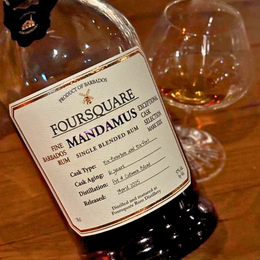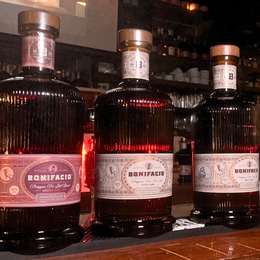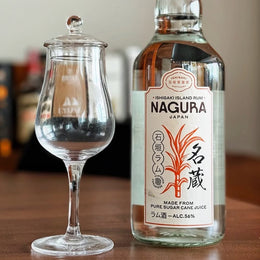
Blends are an often overlooked category in the world of spirits of today, a hangover, perhaps, from the whisky industry which in its early days aggressively marketed single malts, and single casks, as a significantly premium product over its blended siblings. But here, I try to bring some balance to this perspective, because it’s “easy” to make a good distillate, mature it in a single cask, and pull it out at the right time for bottling. But blending, on the other hand, is an art, one that shows the remarkable skills of the blender, picking his/her casks and understanding how these different flavours come together to form a masterpiece.
Which brings me to the rum of today’s review, which I have to admit has been a long time coming - @houseofcanerum. Many of us in Singapore would be familiar with the brand and its founder, @jarek.houseofcane, a passionate rum lover who has been a mainstay of Singapore’s rum scene, and released his first bottles - the Asian-Caribbean rum blend - in 2022. Jarek has a keen palate for great rums too, as I fondly remember that amazing 1998 Caroni for Lime House that he selected.
The Asian Caribbean rum was a rather unique blend at the time, with perhaps no other rum brand, even till today, having blended rums distilled in the Asian continent with its Caribbean counterparts. The discerning drinker would naturally note that the Asian component of the blend would originate from Thailand, along with a couple of “Spanish-style” column still rums from the Dominican Republic, Panama, and Venezuela, and a final punch-in-the-gut with a pot still rum from Jamaica. The rums were individually aged for up to 23 years in ex-bourbon or French oak casks. While I might not have information on the age or the proportions of the components, I do recall two little snippets - that the oldest rums of 23 years were from Thailand, and that the Jamaican rum in question was distilled at the Hampden distillery, which would be plain as day when looking through my tasting notes below. Finally, the rums were blended, and watered down to 43% ABV.
When nosed, the blend was fruity, tropical, warm, all the right elements that remind you of a tropical, sunny beachside. The typical Hampden notes were particularly pronounced, bringing an assortment of ripe yellow fruits, mangoes, pineapples, bananas, but not the funky kind, and a little hint of brine. What impressed me too was how finely balanced it was, where I believe the mature Thai rums were able to counterbalance the sharpness often found in those higher-ester Hampdens, rounding the nose off very nicely with wafts of coconut cream and vanilla. Just based on the nose alone I’d imagine this to be quite the perfect Mai Tai rum.
The palate was surprisingly easy, with a nice, creamy texture, certainly not as tropical as the nose was, but still quite uplifting with a little pop of those yellow fruits, mangoes predominantly. In the middle, I did find the brine and funk attempting to break through, though what followed were the softer elements of the Thai and Spanish-style rums in the blend, offering rich notes of coconut cream again and vanilla, both stretching on into a medium-length finish that brings about a little fizz on the palate, and a return of pineapple zest and caramelised bananas.
Knowing Jarek, it’s little surprise then that the Asian-Caribbean rum turned out as balanced, tasty, and versatile as it could be, be it as a sipping rum on the rocks after a long day’s work, or a rich and punchy rum you’d want in a rum-based cocktail. And it goes to show too that at times the whole is greater than the sum of the parts, and this is especially true for the Asian-Caribbean rum.


Your occasional rum addict!







